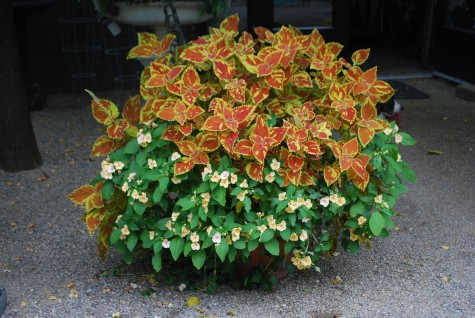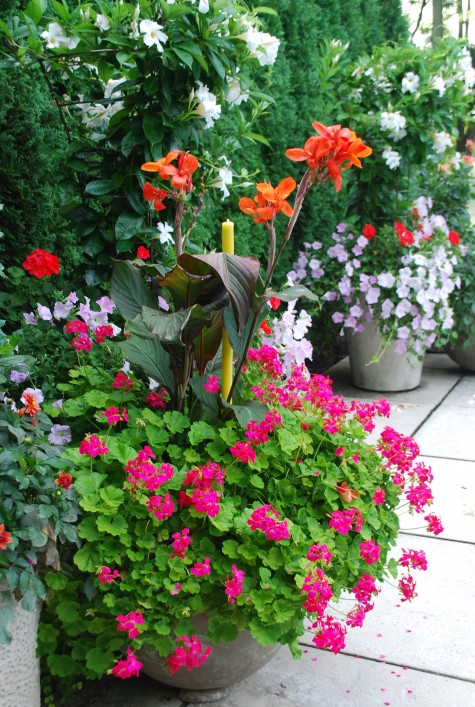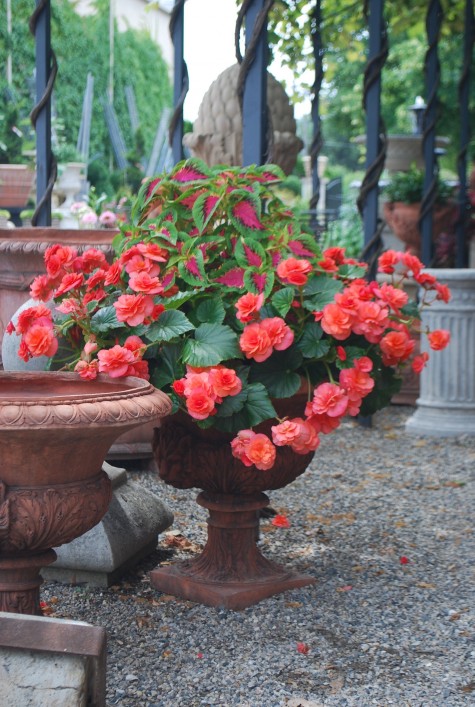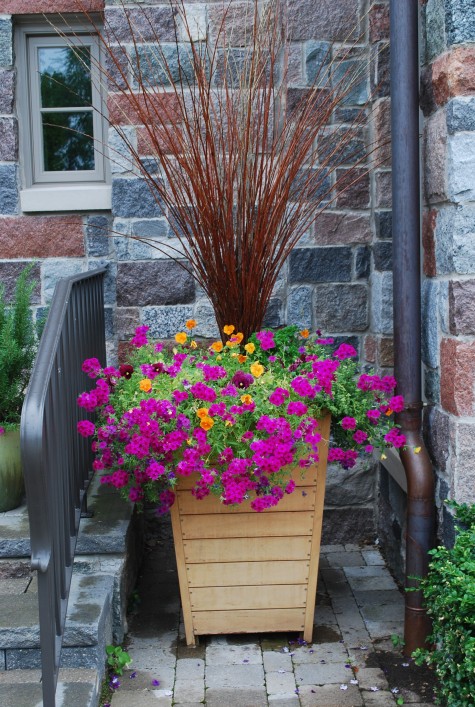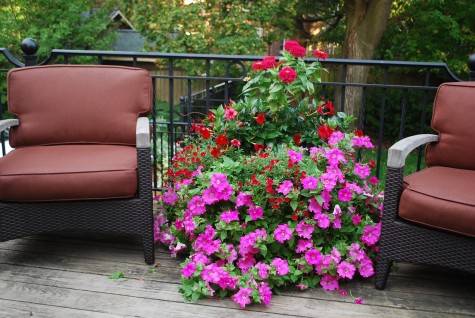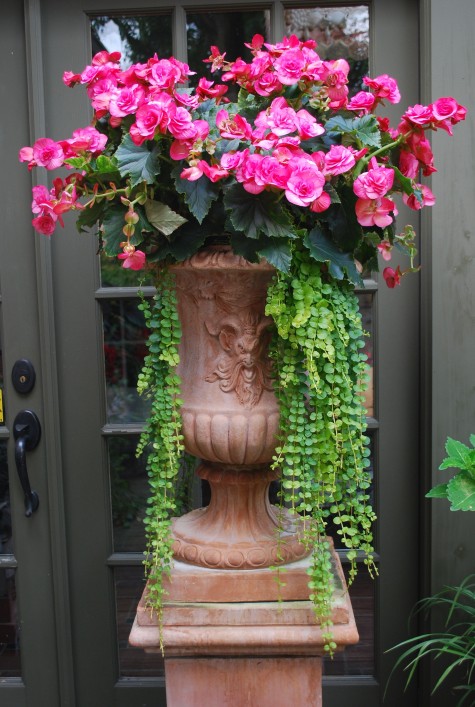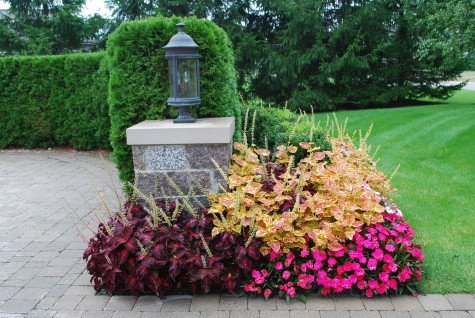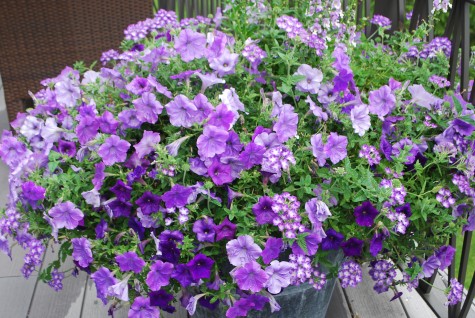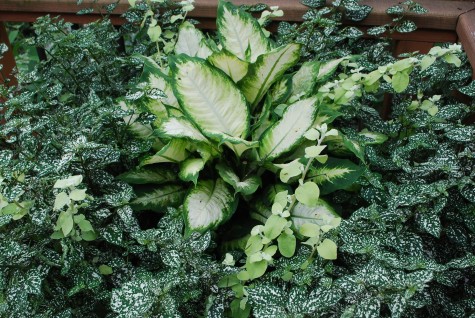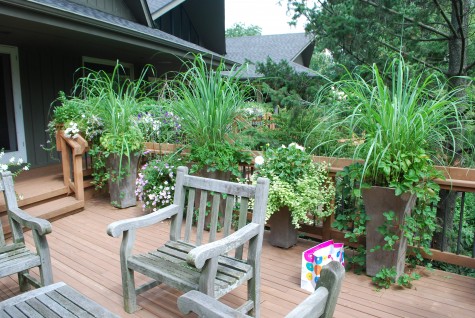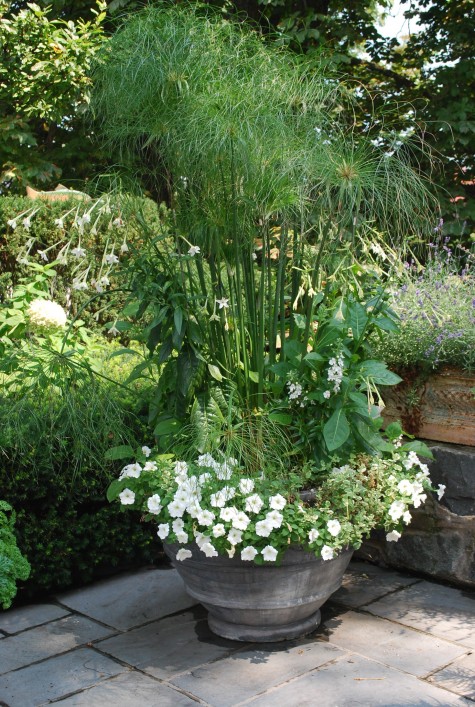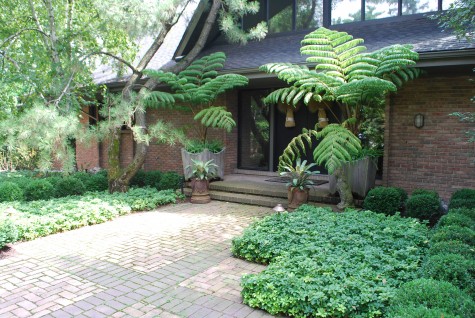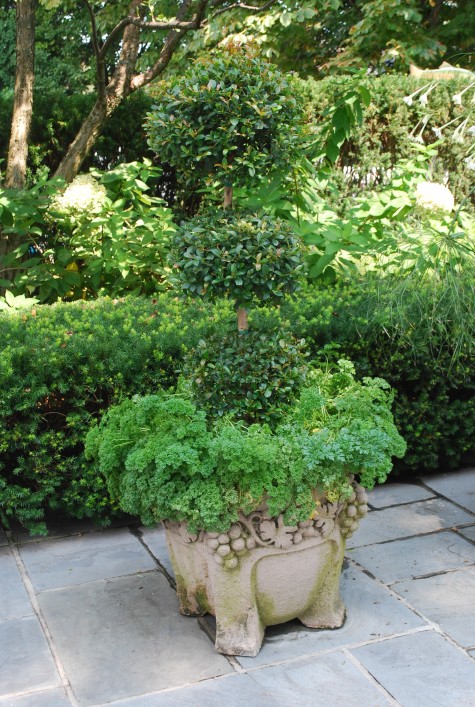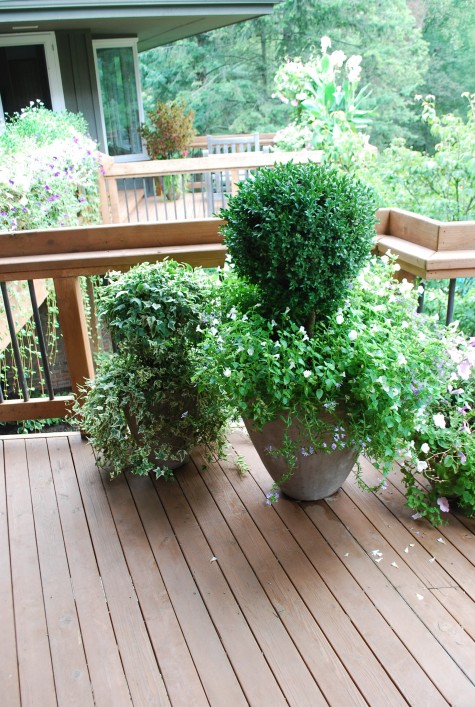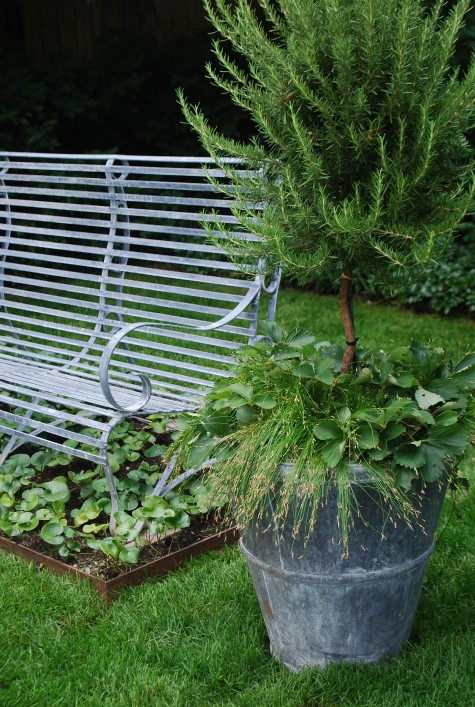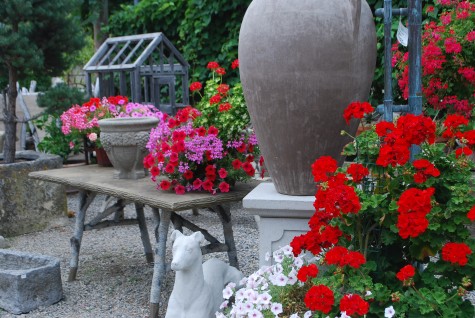 Does it not seem like the colors of all the annual flowers intensify with their first brush with cooler weather?
Does it not seem like the colors of all the annual flowers intensify with their first brush with cooler weather?
At A Glance: The Super-Nova Stage
More Hounds
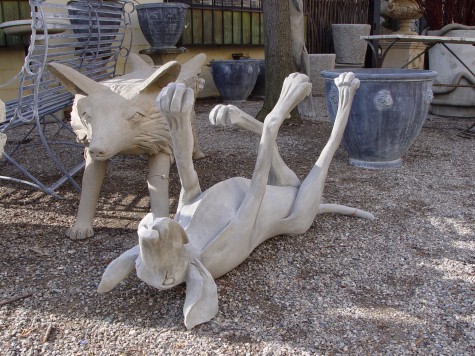 I am very pleased that Troy is in the process of creating his third collection of hand sculpted concrete hounds for the Branch Studio, as all but one of the original 18 dogs have been sold. Detroit Garden Works gets inquiries about them regularly-no wonder. His sculptures accurately represent the forms of the hounds, but what is extraordinary about them is how they capture the soul and being of of a hound. He grew up in a rural Michigan community in a family that hunted, gardened, fished, and grew a lot of their own food. He was a naturalist, farmer, fruit grower, plantsman and gardener before he ever turned to sculpture. His understanding of the natural world is evident in all of his work.
I am very pleased that Troy is in the process of creating his third collection of hand sculpted concrete hounds for the Branch Studio, as all but one of the original 18 dogs have been sold. Detroit Garden Works gets inquiries about them regularly-no wonder. His sculptures accurately represent the forms of the hounds, but what is extraordinary about them is how they capture the soul and being of of a hound. He grew up in a rural Michigan community in a family that hunted, gardened, fished, and grew a lot of their own food. He was a naturalist, farmer, fruit grower, plantsman and gardener before he ever turned to sculpture. His understanding of the natural world is evident in all of his work.
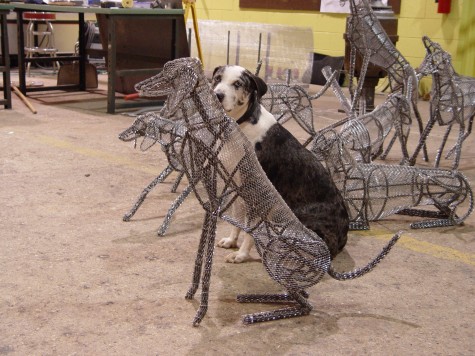 His Annie is a Cattahoula Leopard cur-one of the oldest North American mongrel breeds. Bred in Loiusiana to hunt wild boar, they are also known as Catahoula hog dogs. Fiercely dog-like, smart, energetic and unruly, Annie is much more like a wolf than a poodle. That barely civilized soul of hers you can see loud and clear in Troy’s sculptures.
His Annie is a Cattahoula Leopard cur-one of the oldest North American mongrel breeds. Bred in Loiusiana to hunt wild boar, they are also known as Catahoula hog dogs. Fiercely dog-like, smart, energetic and unruly, Annie is much more like a wolf than a poodle. That barely civilized soul of hers you can see loud and clear in Troy’s sculptures.
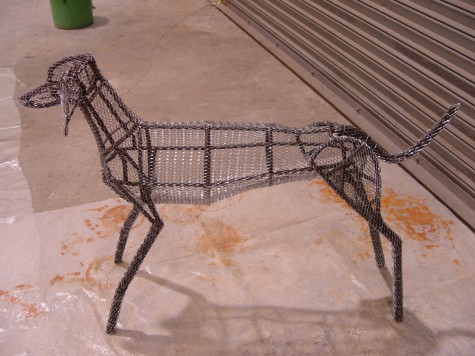 The sculptures begin with the a steel rebar armature that gets covered with a heavy duty wire mesh. The armature is designed and built to give the concrete strength, not describe the finished shape. But even at this stage, it is easy to see that the finished sculpture will have energy and grace.
The sculptures begin with the a steel rebar armature that gets covered with a heavy duty wire mesh. The armature is designed and built to give the concrete strength, not describe the finished shape. But even at this stage, it is easy to see that the finished sculpture will have energy and grace.
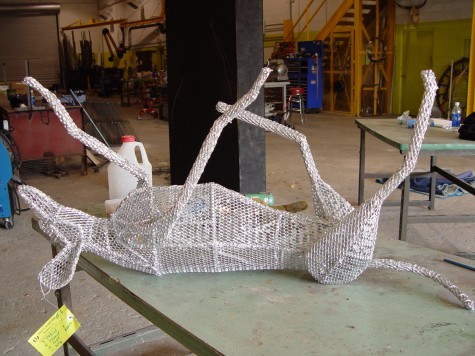 The frame is hot dip galvanized, to keep the steel from rusting once it is coated with cement. Steel and cement in contact with one another is an unfriendly affair. Cement absorbs water; steel in contact with water rusts. The galvanizing process helps keep the two materials away from each other.
The frame is hot dip galvanized, to keep the steel from rusting once it is coated with cement. Steel and cement in contact with one another is an unfriendly affair. Cement absorbs water; steel in contact with water rusts. The galvanizing process helps keep the two materials away from each other.
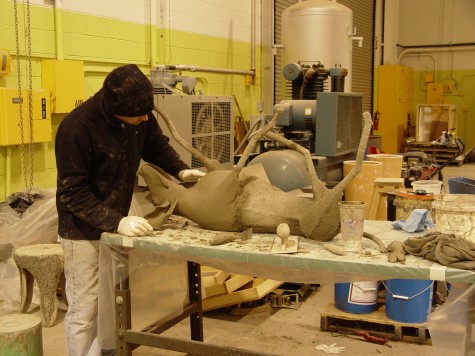 The entire form is packed solid with cement; this is a time consuming and tedious affair. Once the form has cured, a layer of mortar is applied, and hand carved. This is a simple description of a process which requires a considerable knowledge of how mortar can be worked before it sets up. I have watched him work an entire day when all the mortar would do is fall off the concrete. Or another day when nothing was to his liking; he would chip it all off the next day.
The entire form is packed solid with cement; this is a time consuming and tedious affair. Once the form has cured, a layer of mortar is applied, and hand carved. This is a simple description of a process which requires a considerable knowledge of how mortar can be worked before it sets up. I have watched him work an entire day when all the mortar would do is fall off the concrete. Or another day when nothing was to his liking; he would chip it all off the next day.
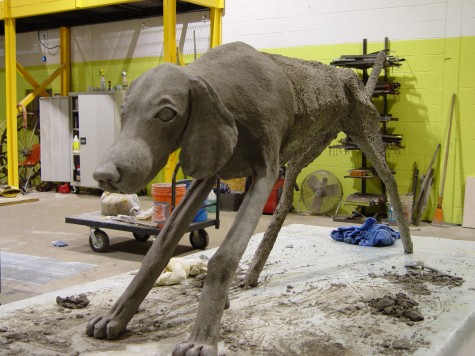 Should the mortar set up faster than you can sculpt it-troublesome. A clear understanding of how the materials work allows him to concentrate on what makes these dogs sculpture. To the last they have energy, attitude, rhythm, tension-life.
Should the mortar set up faster than you can sculpt it-troublesome. A clear understanding of how the materials work allows him to concentrate on what makes these dogs sculpture. To the last they have energy, attitude, rhythm, tension-life.
 Each dog would have a whole lot of one thing going on. His sleeping dogs would be sleeping deeply, oblivious to all else. His howling dogs would keep on howling, or howl louder. His playing dogs had nothing else on their mind except play.They were all engaged in some singular hound activity. Whether sleeping, playing or barking at the moon, I knew they would really come to life outdoors.
Each dog would have a whole lot of one thing going on. His sleeping dogs would be sleeping deeply, oblivious to all else. His howling dogs would keep on howling, or howl louder. His playing dogs had nothing else on their mind except play.They were all engaged in some singular hound activity. Whether sleeping, playing or barking at the moon, I knew they would really come to life outdoors.
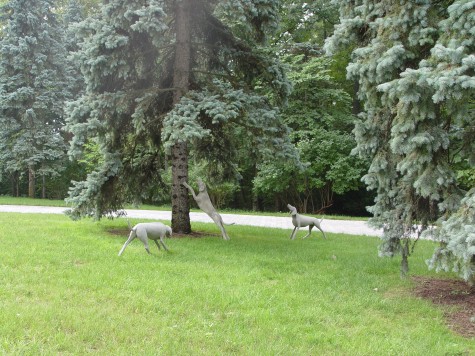 Though I really like all kinds of sculpture in a garden, I am particularly fond of these. They are of a scale and grace that makes them as natural as they are striking. Imagine this moment in the landscape without the hounds-sleepy. Garden sculpture that does not necessarily engage, energize or require a landscape does not appeal to me as much. The dogs look great from a distance, as they are very simple and direct expression of the artist’s view of the living world. Don’t ask me what I mean by this, but these dogs are as witty as they are wily.
Though I really like all kinds of sculpture in a garden, I am particularly fond of these. They are of a scale and grace that makes them as natural as they are striking. Imagine this moment in the landscape without the hounds-sleepy. Garden sculpture that does not necessarily engage, energize or require a landscape does not appeal to me as much. The dogs look great from a distance, as they are very simple and direct expression of the artist’s view of the living world. Don’t ask me what I mean by this, but these dogs are as witty as they are wily.  I doubt my garden will ever have a 19th century limestone sculpture of the huntress Diana, a steel sculpture done by Richard Sera, or a Deborah Butterfield horse, but it could have this dog. I could move it to a different spot every year. I am guessing that before long the dog would have a name.
I doubt my garden will ever have a 19th century limestone sculpture of the huntress Diana, a steel sculpture done by Richard Sera, or a Deborah Butterfield horse, but it could have this dog. I could move it to a different spot every year. I am guessing that before long the dog would have a name.
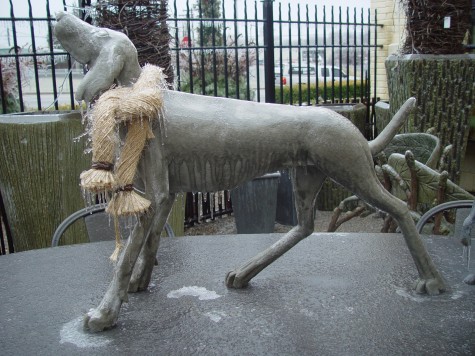
When Annie would visit, no surface outdoors was too high off the ground for her, or off limits to her. You could not help but admire all that energy and zest for the out of doors. See what I mean?
A Restoration
 Some garden ornament is so irresistable that you don’t mind doing some restoration. This very old French cast iron and porcelain vase is dated on the side-Paris, 1827. That it was 183 years old, of great size, and unusual in its construction and surface-this made it a very intrigueing and compelling object. I arranged to purchase and ship it to Michigan from Florida-having only seen pictures.
Some garden ornament is so irresistable that you don’t mind doing some restoration. This very old French cast iron and porcelain vase is dated on the side-Paris, 1827. That it was 183 years old, of great size, and unusual in its construction and surface-this made it a very intrigueing and compelling object. I arranged to purchase and ship it to Michigan from Florida-having only seen pictures.
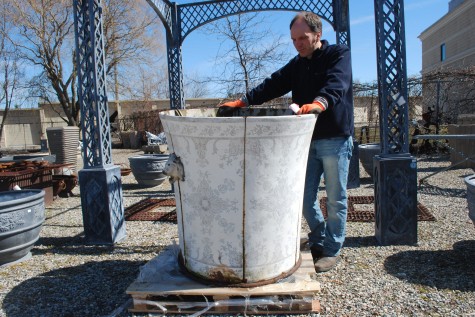
Though I expected to see considerable evidence of its age, pictures do not tell everything. I was enchanted with its worn porcelain surface; the original pattern is so beautifully faded. I had visions of it placed and planted in a landscape such that the benefit would be to everyone’s mutual satisfaction. The sheer scale of it was exciting. One of Rob’s pictures from Italy is of a massive Italian olive jar that served as a prop to an old climbing rose planted next to it. This vase brought the possibility of that level of romance to mind again.
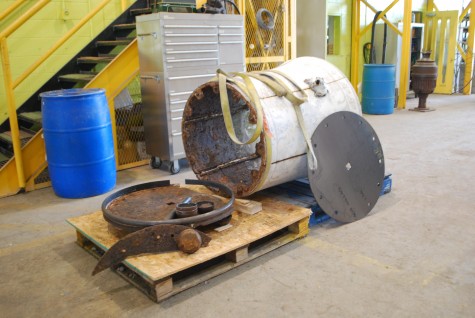
However, the vase had issues. The thick cast iron base plate had deteriorated considerably over its very long life. Buck doubted that the trip from Florida had anything to do with the fact that the base was in pieces. The bolts which fastened the base to the top had completely rusted through. It was just very old, and in need of some restoration. It took four people to get this piece over to the Branch studio. Buck had a 1/4 inch thick piece of steel cut to make a new base; the restoration project would have to get in his queue-at the end of the line.
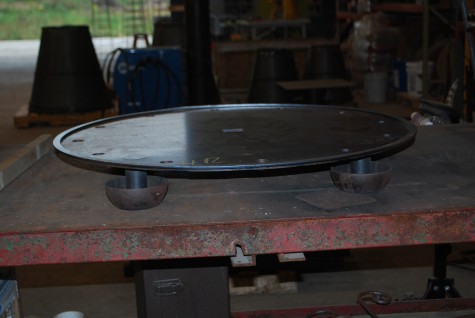 He had the base drilled with holes, hoping that he could weld what was left of the bolts to the new base. He would work on it as he had time; the new base and feet got completed in fairly short order. What was to come would take a lot more time, and be quite involved. It would have to wait until there was time. Early this summer a landscape project came along that was calling for this vase. My client fell for it just as fast as I had; the restoration process picked up speed.
He had the base drilled with holes, hoping that he could weld what was left of the bolts to the new base. He would work on it as he had time; the new base and feet got completed in fairly short order. What was to come would take a lot more time, and be quite involved. It would have to wait until there was time. Early this summer a landscape project came along that was calling for this vase. My client fell for it just as fast as I had; the restoration process picked up speed.
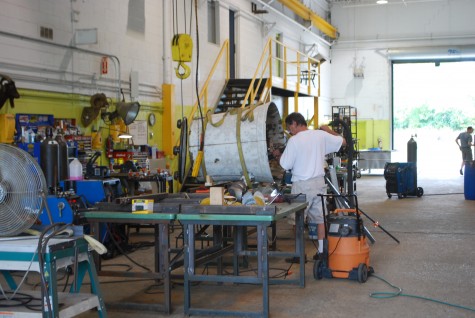 The first order of business-getting the vase in a position and at a height where he could work on it. A bridge crane in his studio which can lift and move up to five tons at a time is a handy gizmo at a time like this. He was able to thread straps through the bottomless pot, and set it on a work surface.
The first order of business-getting the vase in a position and at a height where he could work on it. A bridge crane in his studio which can lift and move up to five tons at a time is a handy gizmo at a time like this. He was able to thread straps through the bottomless pot, and set it on a work surface.
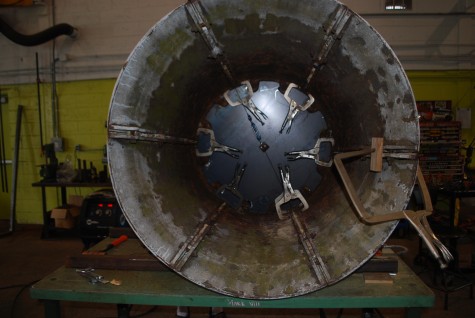 The vase is comprised of six separate cast iron panels. Each panel had two flanges which allowed each piece to be bolted to the next. Construction of course was dependent on the technology of the time. The inevitable spaces between adjacent flanges were stuffed with some kind of caulk which had dried, shrunk and otherwise deteriorated to an alarming degree. Once the vase no longer had a bottom, realigning all the panels to recreate the original round shape was a challenge.
The vase is comprised of six separate cast iron panels. Each panel had two flanges which allowed each piece to be bolted to the next. Construction of course was dependent on the technology of the time. The inevitable spaces between adjacent flanges were stuffed with some kind of caulk which had dried, shrunk and otherwise deteriorated to an alarming degree. Once the vase no longer had a bottom, realigning all the panels to recreate the original round shape was a challenge.
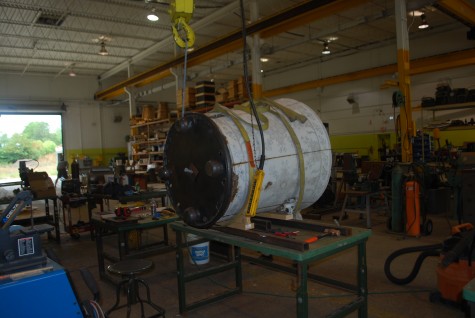 With the pot stabilized on the table, the bridge crane would help him maneuver the base into place. The process of fitting the new base to this piece took what seemed like days.
With the pot stabilized on the table, the bridge crane would help him maneuver the base into place. The process of fitting the new base to this piece took what seemed like days.
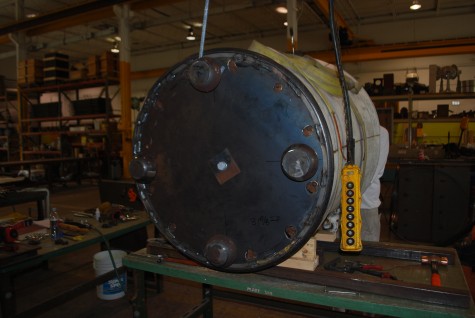
Buck finally called this morning to say vase and base were one again. He was able later to weld the old rusted stubs of the fastening bolts to the new base. He plans to finish the steel in dark grey automobile primer. I know it will be beautiful. The landscape installation is finished, and ready for the delivery and planting of this vase. I cannot wait.
Green And Good Looking
Our temperatures have gone back into the 90’s, topped with a big dollop of high humidity; I am seeing signs of summer’s end in a lot of container plantings-including my own. Crispy stems, mildew, and all manner of other trouble one can put under the heading of late summer malaise. Green plantings seem to keep their good looks, even when the late summer doldrums look more and more like the beginning of the end. To follow are some of my favorites this year.
Lime licorice, white polka dot, and a dracaena whose name I do not know-what a fresh look for August 30.
Lemon grass, variously underplanted with basil, parsley, and strawberries.
King Tut, lime nocotiana, variegated licorice and cream petunias
Australian tree ferns, bromeliads, boxwood, pachysandra
Agave, datura metel
Eugenia topiary, parsley
datura metel, nicotiana mutabilis, gardenia standard, cirrus dusty miller, lime licorice
variegated ivy on standard, boxwood standard
Rosemary on standard, strawberries, fiber optic grass. It is amazing how beautiful a collection of green plants can be, whatever the weather.
